U.S. Standards
- CCSS-Math: MP.1
- CCSS-ELA: RF.3.4.A, RF.4.4.A, RF.5.4.A, 6-8.RST.3, 6-8.RST.4, 6-8.RST.7
- CSTA: 1B-AP-11, 1B-AP-12, 1B-AP-15, 2-AP-13, 2-AP-17
- CS CA: 3-5.AP.13, 3-5.AP.17, 6-8.AP.13, 6-8.AP.15
- ISTE: 1.1.c, 1.1.d, 1.4.d, 1.5.c, 1.6.b
U.K. Standards
Key stage 2
Pupils should be taught to:- design, write and debug programs that accomplish specific goals, including controlling or simulating physical systems; solve problems by decomposing them into smaller parts
- use technology safely, respectfully and responsibly; recognise acceptable/unacceptable behaviour; identify a range of ways to report concerns about content and contact
Key stage 3
Pupils should be taught to:- design, use and evaluate computational abstractions that model the state and behaviour of real-world problems and physical systems
- create, reuse, revise and repurpose digital artefacts for a given audience, with attention to trustworthiness, design and usability
- understand a range of ways to use technology safely, respectfully, responsibly and securely, including protecting their online identity and privacy; recognise inappropriate content, contact and conduct, and know how to report concerns
Description
Introduce your class to Artificial Intelligence and Machine Learning with Tynker Blocks. This AI course uses Tynker's fun and friendly code blocks. Webcam projects powered by AI put your students at the center of the action! Create interactive Snapchat-style costumes, hand-tracking apps, activity games, and so much more.
Along the way, students understand how AI models are driving their amazing inventions behind the scenes. Students even explore natural language processing (NLP), the technology used by modern chatbots like ChatGPT.
Find 10 spectacular AI block-coding projects you can complete in a single class period (45-60 minutes), as well as kid-friendly introductions to key AI concepts. Find amusing projects like an AI-powered mystery game, a face-painting game, a virtual DJ kit, all kinds of incredible interactive video effects, and so much more. All student work is automatically tracked and assessed; and with access to Tynker's premium offerings, you'll even be able to monitor student progress and mastery charts.
Topics
- AI Basics
- Live Video
- Face-Tracking AI
- Hand-Tracking AI
- Body-Tracking AI
- Natural Language Processing (NLP)
- Object Classifiers
- Machine Learning Basics
- Simple Math
- Sequencing
- Conditional Logic
- Simple Loops
- Lists and Arrays
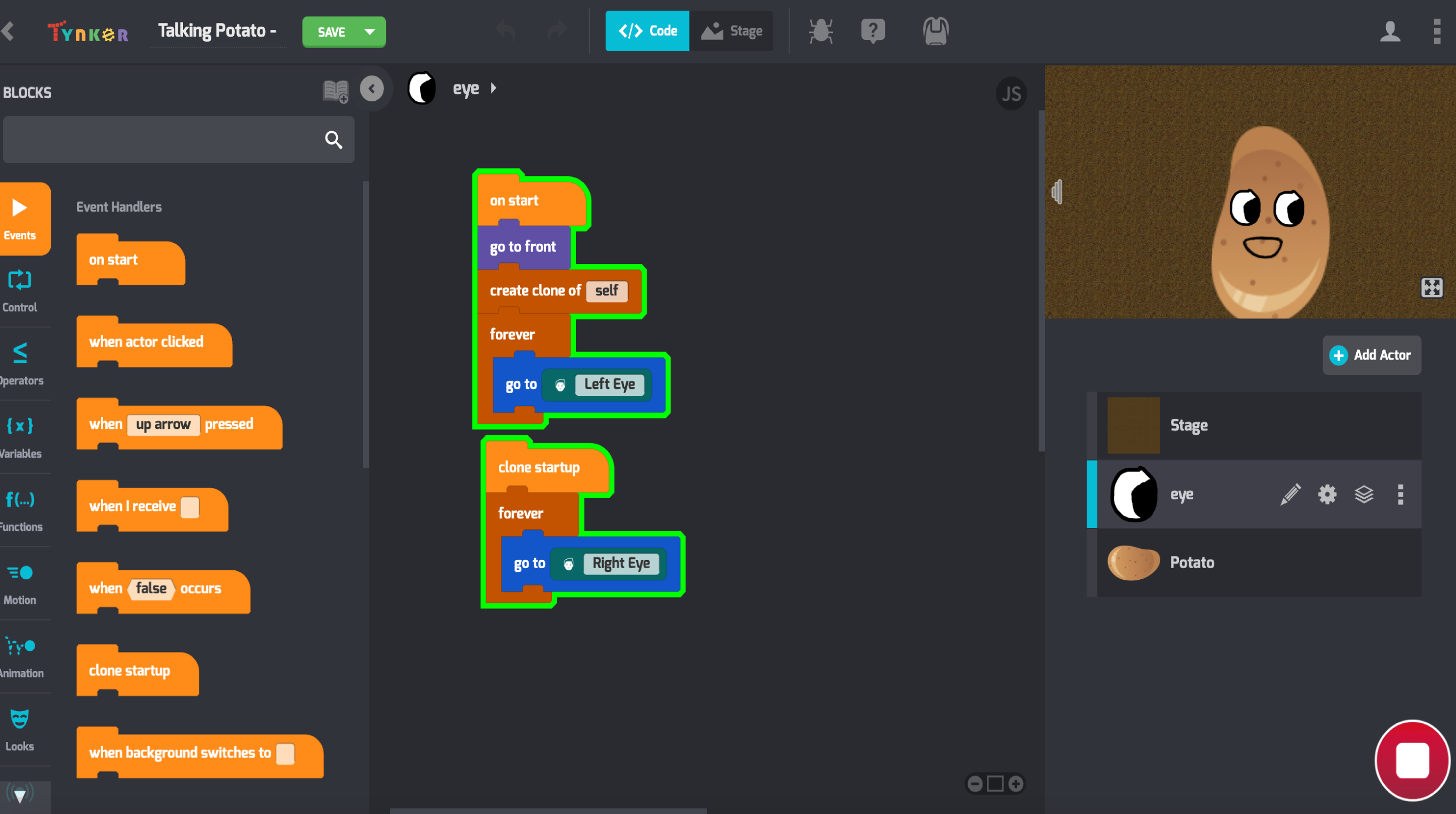

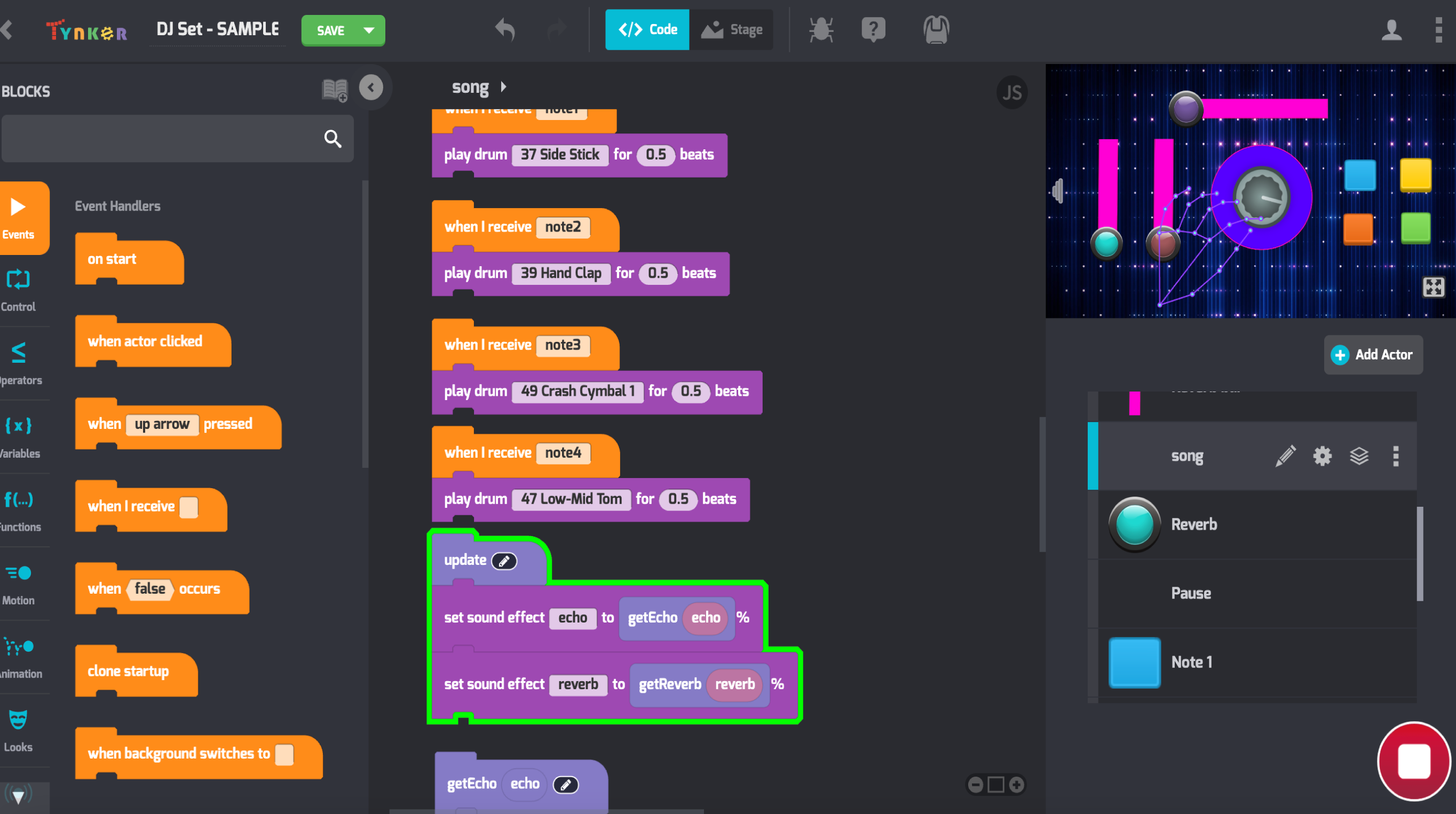
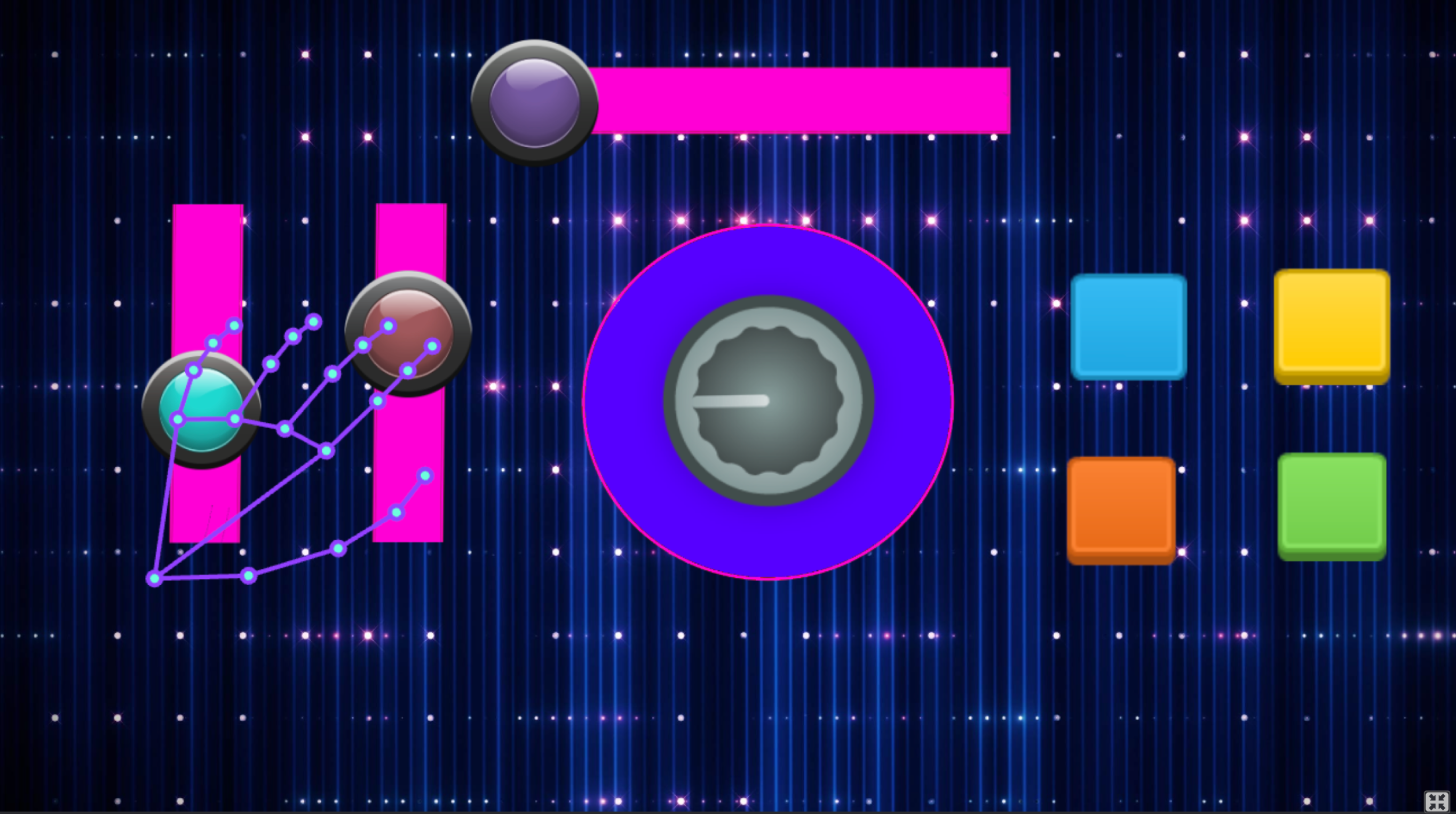
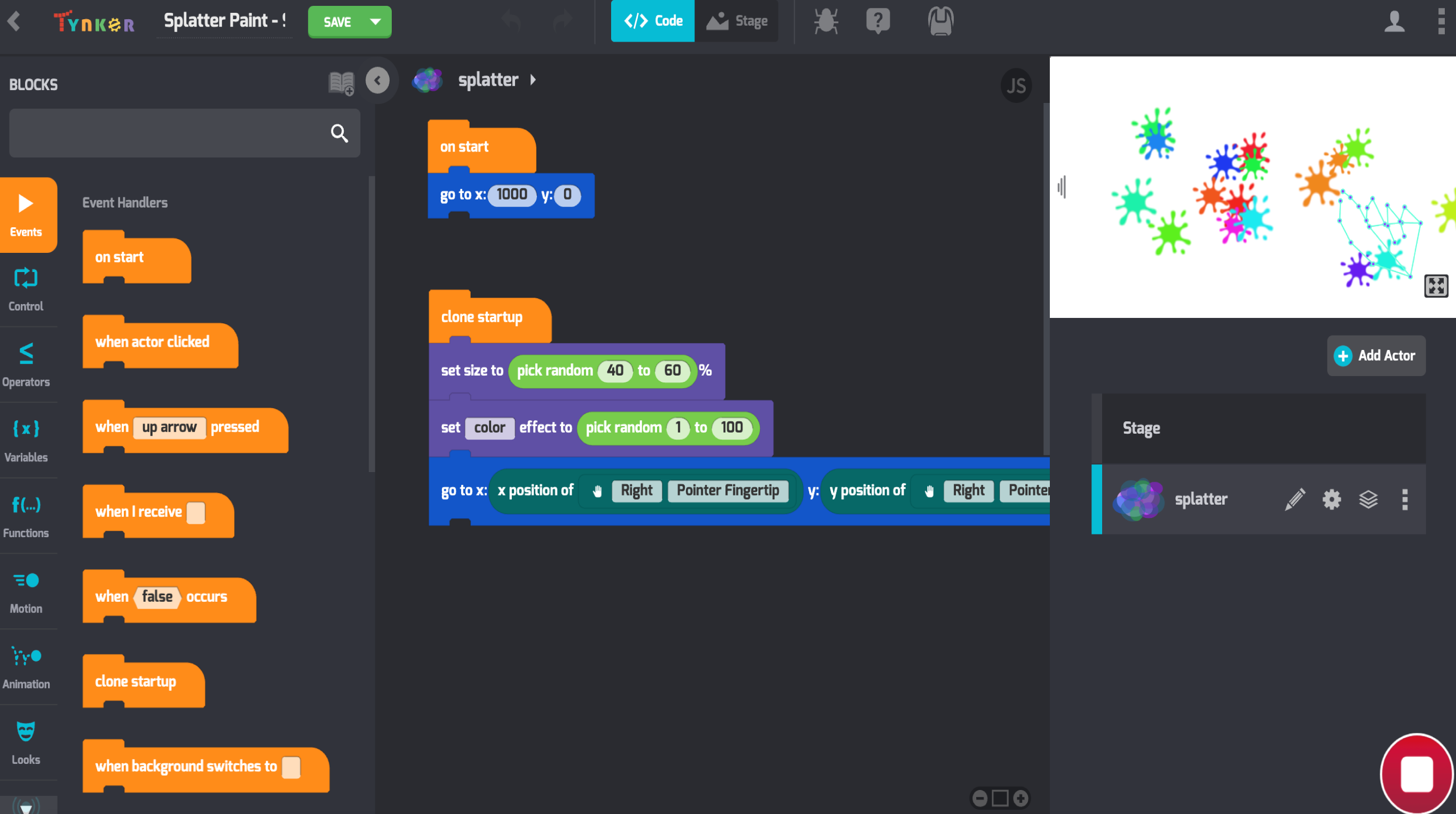

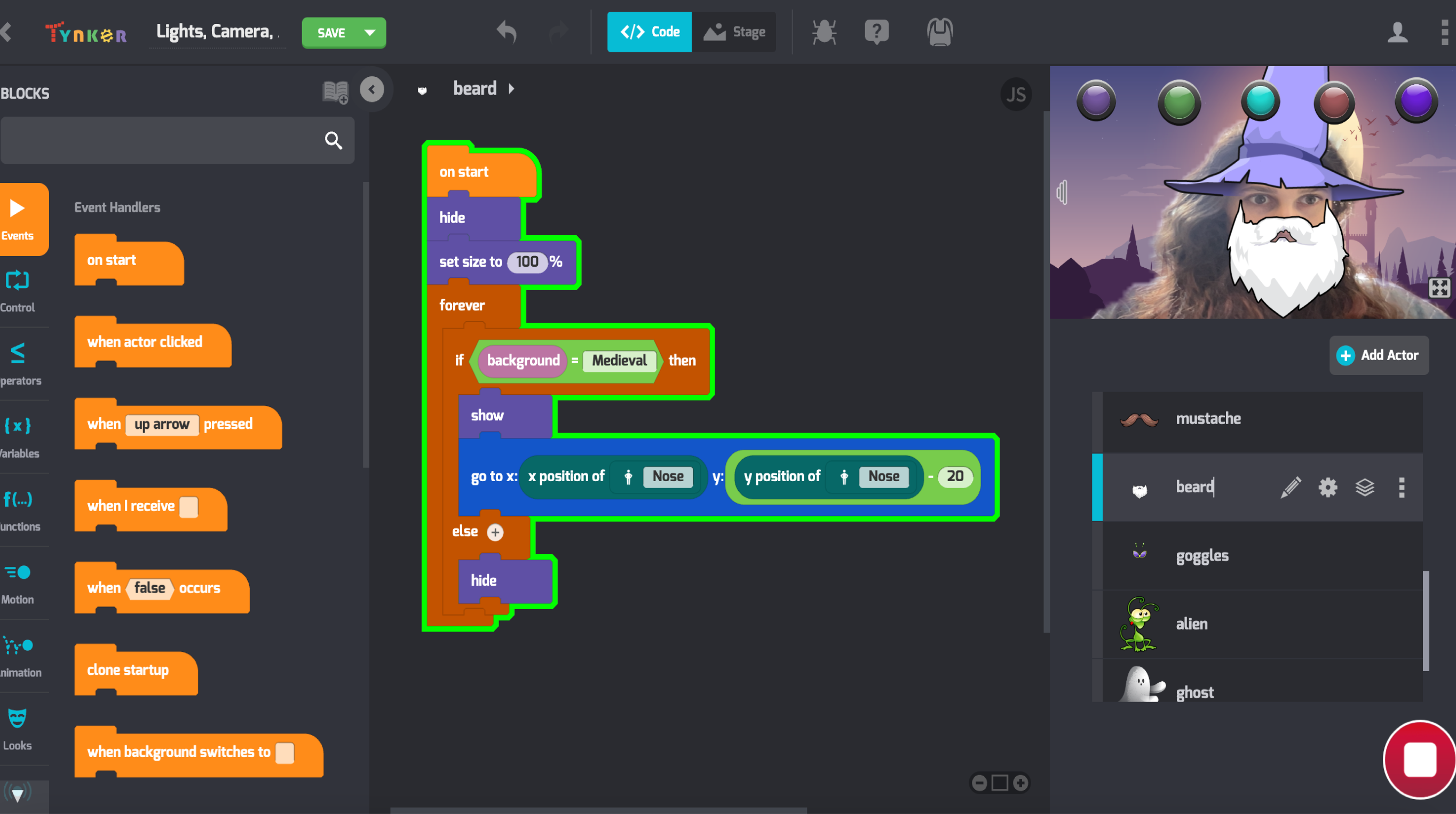
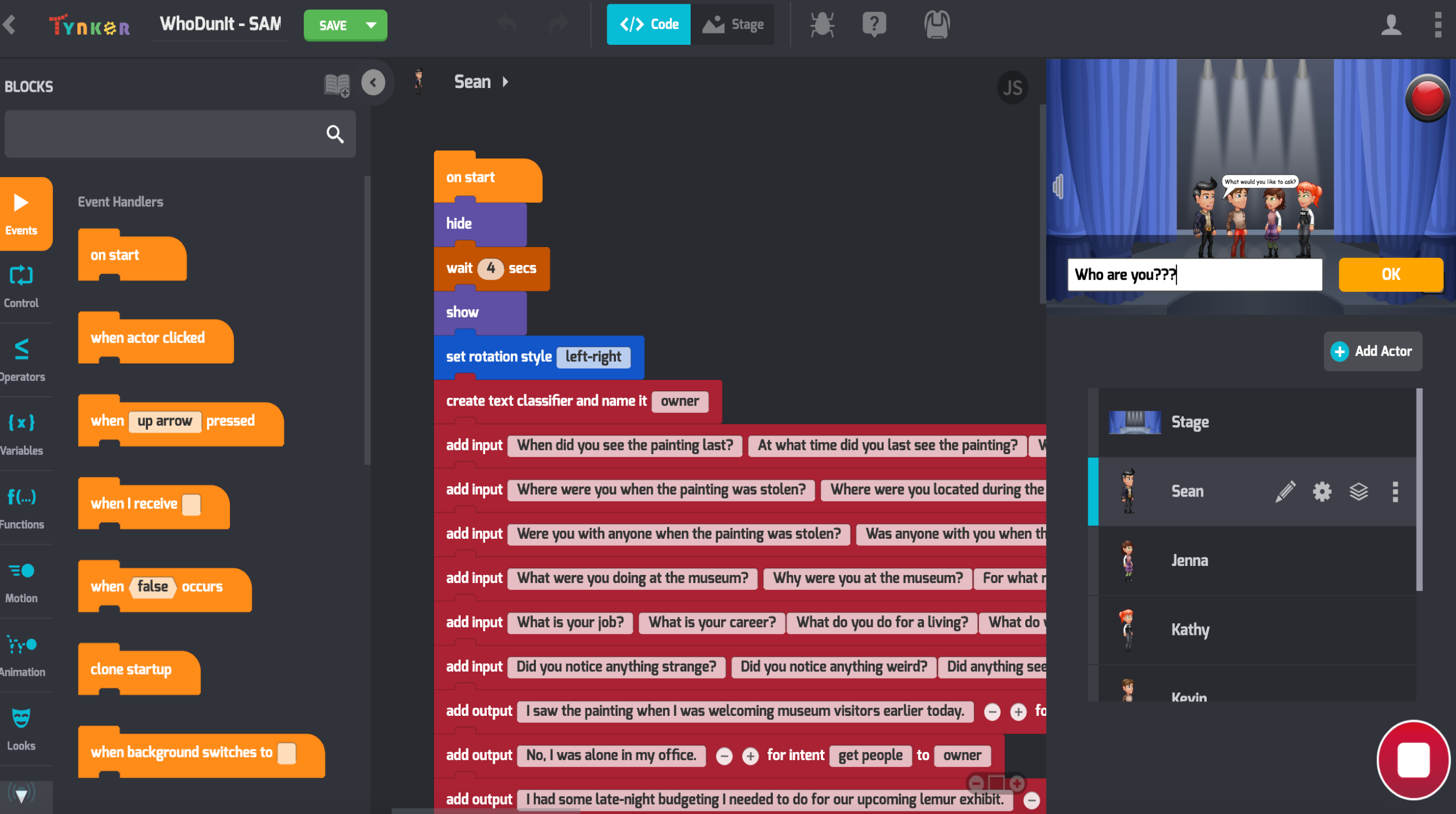
What Students Learn
- Build 10 fun projects
- Use body pose tracking to make stick figures dance
- Identify and detect objects
- Become a DJ with hand tracking
- Solve a mystery with NLP
- Become a talking potato head with face tracking
Technical Requirements
* Online courses require a modern desktop computer, laptop computer, Chromebook, or Netbook with Internet access and a Chrome (29+), Firefox (30+), Safari (7+), or Edge (20+) browser. No downloads required.

Lesson
1 : Face Tracking
Artificial Intelligence 101
Time: 60+ minutes
Introduction
Tynker Blocks Introduced
Vocabulary
Objectives
Materials
Warm-Up (5 minutes)
Activities (45 minutes)
Facilitate as students complete all Face Tracking modules on their own:
1. Concepts (Introduction)2. Fire Breather Example (Example)
3. Fire Breather (DIY)
4. Talking Potato Example (Example)
5. Talking Potato (DIY)





